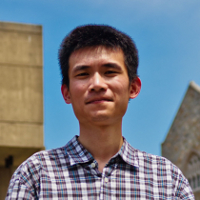 Potential energy surfaces and the associated reaction paths they define have played an important role in understanding the assembly of molecules. In this talk I will show that similar mechanistic effects exist in light-driven self-organization of metal nanoparticles; by analogy, atoms are replaced by silver nanoparticles and optical trapping/optical binding interactions serve as “covalent bonds”. Structurally stable 2D and 3D clusters with various geometries have been photonically synthesized using shaped optical fields. The formation of specific clusters is 'path-dependent’, i.e., the assembly depends on the initial positions and hence paths the nanoparticles take upon entering the optical field. The equilibrium geometries and pathways for assembly measured in experiment agree with what is expected from electrodynamic simulations and, in particular, the electrodynamic potential energy surfaces constructed from these simulations. These stable clusters, in turn, can serve as templates to trap other smaller objects, e.g., semiconductor quantum dots, in the regions of large field gradients created by multiple scattering and interference. These results pave the way for rational design of photonic clusters and even hybrid assemblies with nonlinear-optical and quantum-optical properties by all-optical methods.
Potential energy surfaces and the associated reaction paths they define have played an important role in understanding the assembly of molecules. In this talk I will show that similar mechanistic effects exist in light-driven self-organization of metal nanoparticles; by analogy, atoms are replaced by silver nanoparticles and optical trapping/optical binding interactions serve as “covalent bonds”. Structurally stable 2D and 3D clusters with various geometries have been photonically synthesized using shaped optical fields. The formation of specific clusters is 'path-dependent’, i.e., the assembly depends on the initial positions and hence paths the nanoparticles take upon entering the optical field. The equilibrium geometries and pathways for assembly measured in experiment agree with what is expected from electrodynamic simulations and, in particular, the electrodynamic potential energy surfaces constructed from these simulations. These stable clusters, in turn, can serve as templates to trap other smaller objects, e.g., semiconductor quantum dots, in the regions of large field gradients created by multiple scattering and interference. These results pave the way for rational design of photonic clusters and even hybrid assemblies with nonlinear-optical and quantum-optical properties by all-optical methods.
Speaker:
Institution:
Location:

